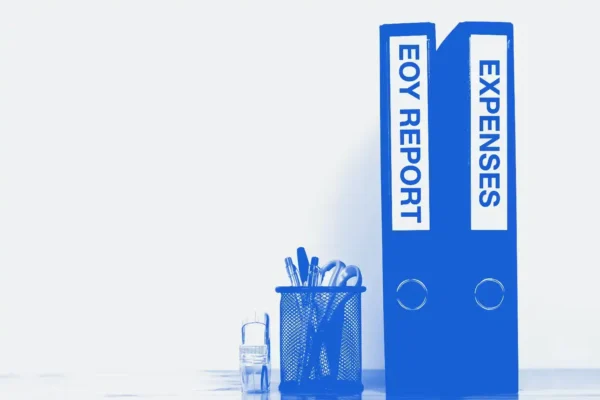
5 Questions Every Small Business Should Ask Their Bank

Freelancing has become a popular career choice, offering individuals the freedom to work on their own terms and pursue their passions. However, the journey of a freelancer is marked by a unique financial challenge when compared to the steady paychecks of traditional employment— managing cash flow.
In this article, we will delve into the strategies that can help freelancers effectively manage their cash flow and achieve financial stability.
Understanding the Freelancer Cash Flow Challenge
Freelancers experience a stark departure from the regularity of paychecks that employees enjoy. While traditional jobs offer the comfort of bi-weekly or monthly income, freelancers often find themselves navigating through periods of ebbs and flows based on client acquisition, project completion, invoicing, and client payment schedules.
This irregular income can be beneficial and also problematic. On one hand, it presents opportunities for potentially higher earnings and greater control over one’s time. On the other hand, it demands a heightened sense of financial responsibility and planning.
Check Out Our HYSA for Businesses
Earn a competitive rate and pay zero bank fees¹ with a business high-yield savings account at Amplify.
Managing Cash Flow as a Freelancer
This financial roller coaster underscores the importance of mastering cash flow management, a skill that can make or break a freelancer’s financial stability.
Here are six tips to improve your cash flow management.
1. Build an emergency fund.
Emergency funds aren’t unique to freelancers— in fact, it’s something we recommend as a financial tool for everyone— but it’s especially important for self-employed people.
Imagine this scenario: you’re a freelance designer who lands a big project that promises a substantial payout, only to have the client delay payment due to unforeseen circumstances. Meanwhile, bills continue to pile up, and financial stress mounts. This is where the emergency fund steps in as a lifeline.
An emergency fund serves as a buffer between financial setbacks and a freelancer’s ability to cover essential expenses. The rule of thumb is to save at least three to six months’ worth of living expenses. Calculate your monthly expenditures—rent, utilities, groceries, insurance, and other necessities—and aim to set aside enough money to cover these costs for several months.
This money can be set aside in a safe place, like its own business savings account. (And if it earns interest like Amplify’s business high-yield savings account— well, that’s an added bonus!)
When and if you dip into your buffer fund, make sure that replenishing it is a top priority. The ideal is to make sure it’s always full, ready for the next challenge.
2. Build your budget with flexibility in mind.
Budgeting is a powerful tool for financial management, and for freelancers, it takes on a unique dimension due to the irregular nature of income. Unlike traditional employees who receive predictable paychecks, freelancers must craft budgets that accommodate fluctuating earnings while still maintaining control over their finances.
While there’s no one budgeting strategy that a freelancer should follow, keep the following tips in mind.
Understand your expenses.
Begin by creating a comprehensive list of all your expenses, including both fixed (rent, utilities) and variable (entertainment, dining out) costs. Categorize your expenses into needs (essential) and wants (non-essential). This will help you prioritize your spending and make informed decisions about where to allocate your income.
Consider average monthly income.
Budgeting is all about how you divvy up your income. Of course, this can be hard to do when your income is constantly changing. Averaging your monthly income will give you a more stable income figure to base your budget on, rather than relying solely on the highest earning months.
For example, say you earn $5,000 in January, $2,500 in February, and $4,000 in March. You shouldn’t be budgeting as if you earn $5,000 a month. Instead, you should consider the average and treat your money as though you earn around $3,800. When you have a surplus from your average, save it for months when you’ll make less.
By doing so, you’ll avoid overspending during prosperous months and be better prepared for slower periods.
Plan for tax obligations.
Setting aside a portion of your income (around 30%) for taxes is crucial. Freelancers are responsible for both income and self-employment taxes. Open a separate savings account specifically for taxes and consistently contribute to it throughout the year to avoid a gaping hole in your bank account when April rolls around. Ideally, this is separate from your emergency fund.
Regularly review and adjust.
Frequently review your budget to ensure it aligns with your current financial situation and goals. As your income or expenses change, make necessary adjustments. This proactive approach will help you stay in control of your finances.
4. Transition to full-time freelance employment at the right time.
Much of your stability as a freelancer will depend on how you start. Beginning your journey with little to no buffer money or income can lead to an endless cycle of catch-up and living gig-to-gig.
When first starting as a freelancer, many experience a transitional period where income from freelance projects might not be consistent enough to cover all expenses. During this phase, maintaining a full-time or part-time job that provides a steady paycheck can serve as a strategic steppingstone toward full-time freelancing.
During this transition time, consider:
- Financial goals: Determine the level of income you need from your part-time job to cover essential expenses. This allows you to allocate freelancing income toward building a financial buffer and a fund for business expenses.
- Your freelance income progress: Track your freelance income over a few months while still working your part-time job. This will give you an idea of how consistent your freelance earnings are and whether they can sustain your financial needs once you leave your part-time job.
- A gradual transition: As your freelancing income becomes more consistent and substantial, gradually reduce your part-time hours until you’re confident in your ability to rely solely on freelancing income.
The transition to full-time freelancing is a big step that requires careful planning and preparation. By focusing on financial stability, building a buffer, and gradually increasing your freelance income, you can make the transition smoother and position yourself for long-term success as a freelancer.
5. Invest in cash-management tools.
Not a fan of spreadsheets and math formulas? Fortunately, a range of tools and resources can streamline the process, helping you keep track of income, expenses, and financial goals.
Consider these two types of software and programs:
- Personal budget apps or software such as You Need a Budget (YNAB)
- Accounting tools that allow you to track expenses, manage money coming in, send invoices, and more, such as QuickBooks Self-Employed.
By utilizing these tools, you can gain a clear overview of your financial situation, track income and expenses, and manage invoicing with less headache.
6. Set payment expectations with clients.
It doesn’t take long for a freelancer to learn that, oftentimes, cash flow problems don’t arise from a lack of work. They arise from a lack of payment.
The following are a few pointers that can help you get paid on time, creating more predictability and stability for your finances.
- Define clear payment expectations: From the outset, communicate your payment terms clearly. Outline when payments are due, the preferred method of payment, and any late fees or penalties for overdue invoices. Setting expectations upfront helps prevent misunderstandings later.
- Request an upfront deposit: Consider asking for an initial deposit before starting work. This provides you with a financial cushion and demonstrates the client’s commitment. The deposit amount can vary based on the project’s scope and your comfort level.
- Establish milestone payments: For larger projects, break the work into milestones and set payment intervals tied to the completion of these milestones. This approach ensures you receive payments throughout the project rather than waiting until the end.
- Invoice on time: Send invoices promptly upon completing milestones or project phases. Clients appreciate prompt invoicing, and it helps maintain a consistent cash flow.
- Implement late payment penalties: Include a clause in your contract outlining late payment penalties. This could be a percentage-based fee applied to overdue invoices. This incentivizes clients to pay on time.
- Use retainer agreements: For ongoing work or long-term projects, consider using retainer agreements. Clients pay a set amount in advance each month, ensuring a predictable income stream for you.
Remember, negotiating payment terms is a normal part of business interactions, and clients generally expect these discussions. Prioritize transparency, mutual understanding, and a win-win outcome that ensures timely payments while maintaining a healthy working relationship.
Plan, Plan, Plan
Navigating the intricacies of cash flow management as a freelancer is a journey that demands proactive planning, adaptability, and financial foresight. From building emergency funds to creating specialized budgets that cater to the ebb and flow of income, freelancers can achieve stability by implementing tailored strategies.
Ditch the Bank Fees
Learn more about our fee-free business accounts – perfect for small businesses in Austin and Central Texas.


